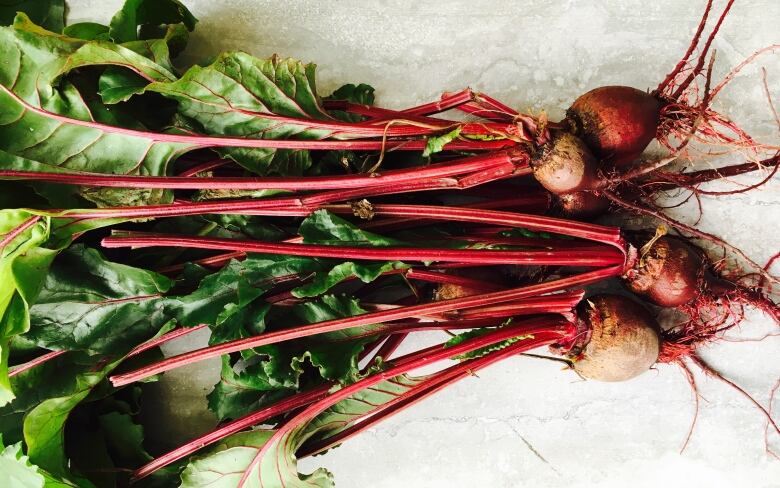Food Trends for 2017: What to watch and what we've had our fill of
Julie Van Rosendaal predicts turmeric milk and edible seaweed will fill our bellies in the New Year

As 2016 comes to a close, it's fun to look back on what foods kept us happy and fed over the past year, and speculate on what we might be eating in the year to come.
Here are a few trends to watch for, and some we're had our fill of.
Wine bars
Wine isn't as intimidating as it used to be — any perceived rules are being broken. It's casual and drinkable, without pretension. Wine bars allow more affordable tastes, paired with well-curated food, instead of vice-versa.

Family-style and sharing plates
Restaurants are tapping into the conviviality of the family meal by offering meals served family-style that are perfect for sharing.
Similarly, sharing plates appeal to those who want more from their dining-out experience and may not want to commit to a single protein-veg-starch entree.
A related dining trend is menus that don't change between lunch and dinner, the expectation being you'll order as much (or little) as you want, depending on your appetite and the time of day.
'Veggie-forward' restaurants
Although there have always been eateries that treat vegetables as more than a side dish, more attention is being paid to veggies such as celeriac, broccoli and members of the brassica family.
Although kale is sliding in the polls, Brussels sprouts and cauliflower are maintaining their popularity. However, kohlrabi is still lurking in the shadows, waiting for its cue.

Craft cider
Micro and nano breweries have been taking Canada by storm — now it's cider's turn.
Happy hours
The competition is fierce and restaurants are drawing in customers during that sweet spot between work and dinner with happy hour cocktail prices and special deals — from prix-fixe menus to free corkage to more creative specials, like roll the dice and get your dinner free.
Sustainable seafood
As Bon Appetit deputy editor Andrew Knowlton noted in his list of Food Trends We Hope Disappear in 2017, "I don't know if octopus has a lobbyist, but they need one. Otherwise, pretty soon there won't be any left."

House-made sodas, seltzers and bitters
Coke and 7-Up are getting sidelined by fizzy drinks made with homemade syrups and carbonated water. Not only are the concoctions more interesting for kids and adults who don't want wine or cocktails, they reflect restaurant menus and are more environmentally friendly.
Cooking with kelp
Watch for edible seaweed, nutrient-dense, wild and farmed from both coasts, on restaurant menus this year.

Baked Alaska
Desserts circa the 1970s (also: bananas Foster and classic bundt cakes) are coming to a rec room near you. And really, who can resist cake topped with ice cream, wrapped in meringue and lit on fire?
Pulses
What is a pulse? The United Nations declared 2016 the International Year of Pulses in order to position the tiny dried seeds of legume pods as a delicious, affordable, accessible source of protein and other essential nutrients.

We're seeing more on restaurant menus and home cooks are realizing it's not a big deal to soak dried beans in water.
Middle Eastern cuisine
We're embracing the lively flavours, colours and textures of Middle Eastern cuisines. Home cooks love Israeli-born British chef Yotam Ottolenghi's stunning cookbooks and we're seeing more Middle Eastern influence at restaurants and casual eateries.

Turmeric
Tumeric, in both its fresh and dried forms, is becoming recognized for its anti-inflammatory properties, antioxidants and health benefits that has made it common in Eastern medicine for centuries.
The knobby rhizome resembles fresh ginger — only smaller, with a peppery, intensely yellow-orange flesh that gives curry blends its brilliant colour.

Turmeric milk — frothy, warmed milk sweetened with honey and spiked with turmeric (and often other warm spices, like cinnamon, nutmeg and black pepper) — is taking over Instagram stories these days as an alternative to coffee or tea.
Continuing awareness about food waste
Restaurant chefs and home cooks alike are increasingly conscious of the cost of food waste and applying the "nose to tail" concept to other ingredients in their kitchens — recycling scraps, using all the bits and freezing or preserving before composting.
Cooking without a recipe — looking in your fridge and turning what you have into something delicious rather than sourcing ingredients for a recipe you want to make is changing the way we approach mealtimes and encouraging creativity (and cooking skills).

Grain bowls for breakfast
Savoury grain and veggie bowls — a big mash-up of ingredients in an easy-to-eat bowl — have been big this year, but good, old-fashioned oatmeal and porridge, both sweet and savoury, are making a comeback.
Good food made approachable/affordable
Interesting, well-prepared food doesn't have to be fancy or exclusive to high-priced fine dining establishments. It can be found everywhere, from casual bistros to street food stalls.
Breaking the rules (and cooking like your mom did)
Some of the best restaurant chefs in Canada didn't even attend culinary school. They are eschewing traditional methods and going with what works — an alternative mash-up not only of ingredients, but techniques they've learned in various kitchens, including the ones they grew up in.
Trends to end
What trends will (hopefully) ride out into the sunset? A lot of people are hoping kale will go away.
Others are realizing that toast is just toast — even when it has avocado smashed on top. They're losing their appetite for Q water (just give it to us from the tap), precious plating and foam and restaurants that are just too loud. People are going back to drinking their smoothies out of a glass instead of a bowl. Also, pork belly and bacon in everything have jumped the shark.

What are some Calgarians hoping will become a trend?
Poke bowls and sushi burritos and more Syrian, Turkish, Iranian, Jordanian, Bengali, Kashmiri, Malaysian and West African cuisine. And more soul food, please.